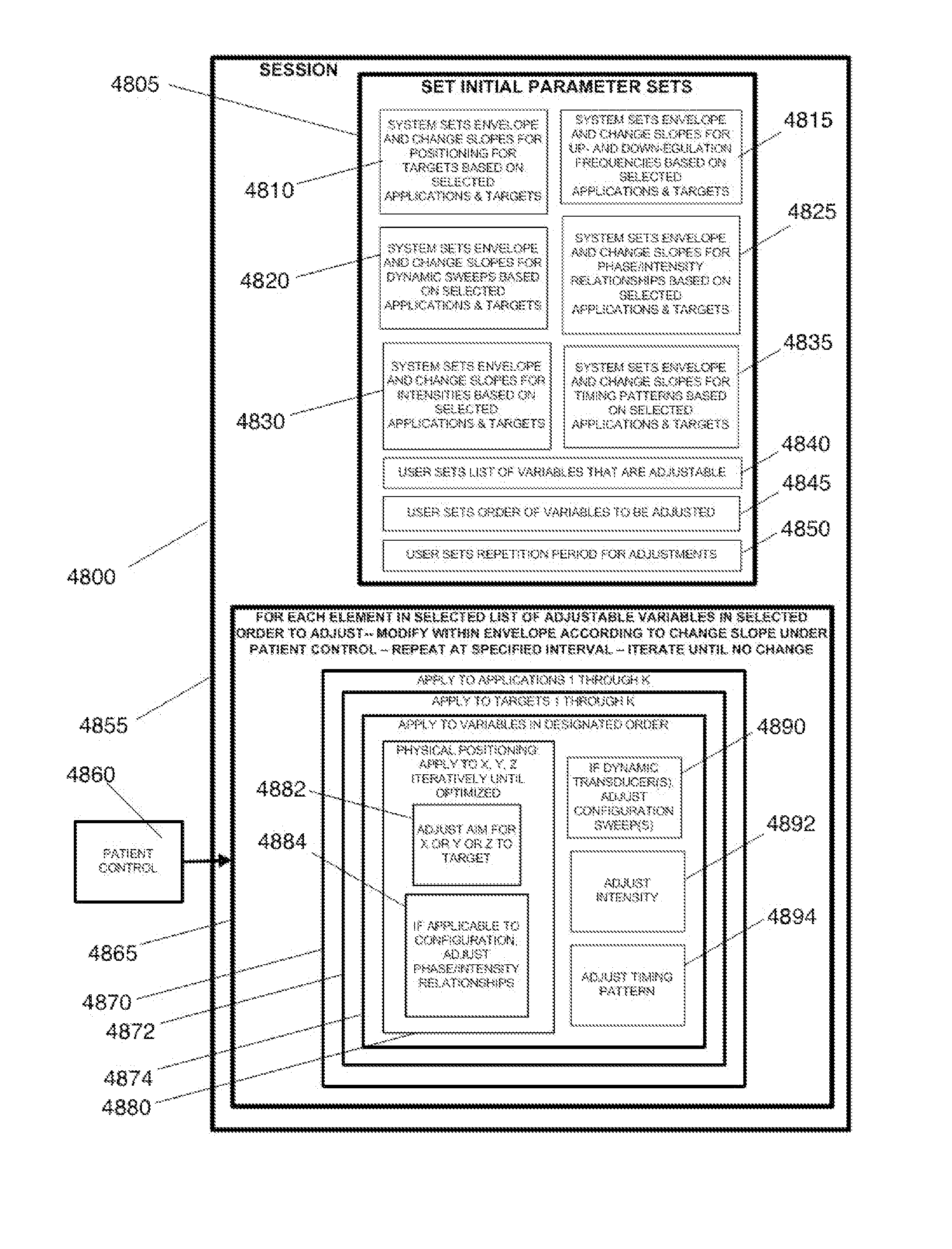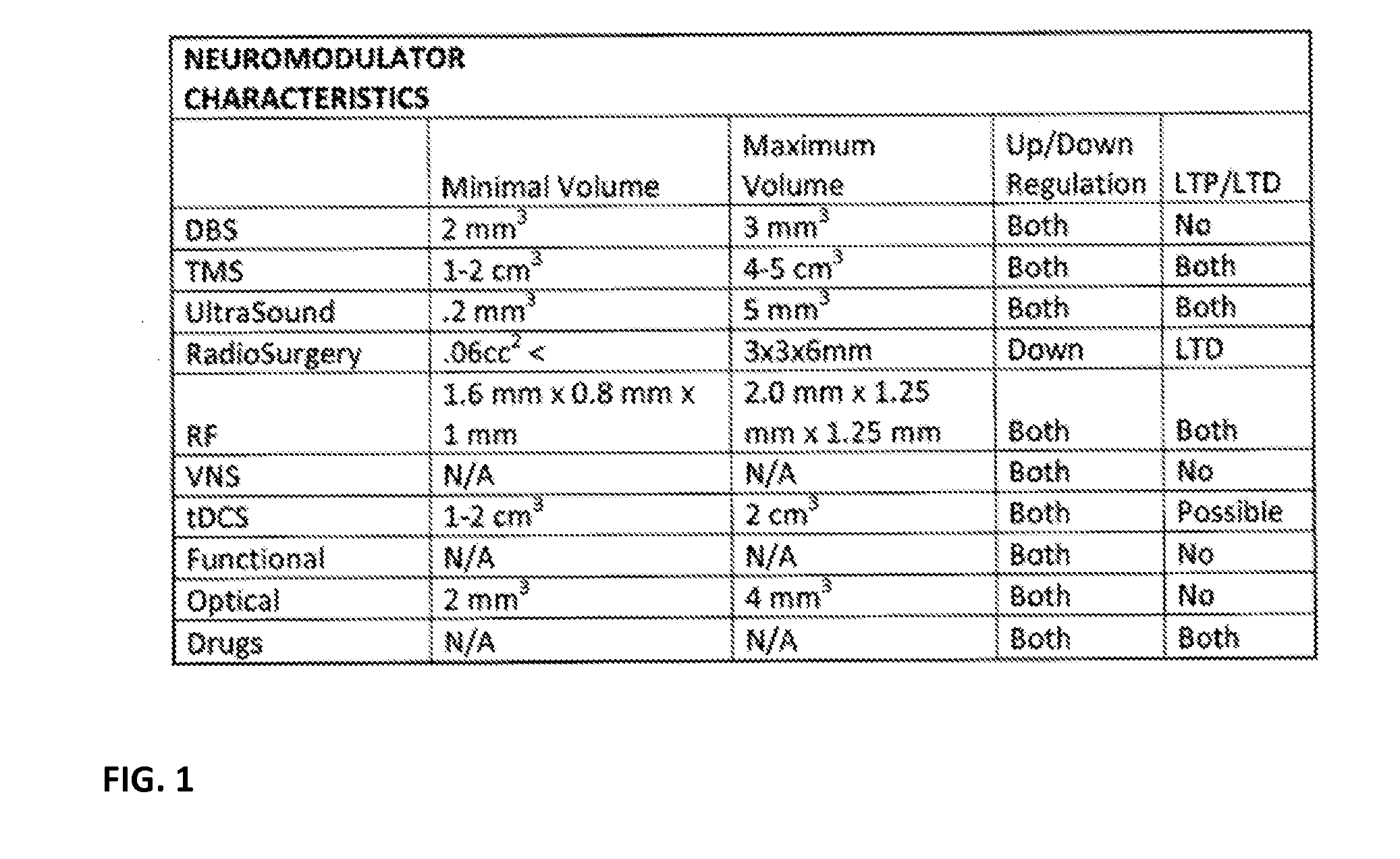Devices and methods for optimized neuromodulation and their application
a neuromodulation and neuromodulation technology, applied in the field of devices and methods for optimizing neuromodulation and their application, can solve the problems of increasing neural activity, long-term effects, and using expensive units, and achieve the effect of reducing image distortion
- Summary
- Abstract
- Description
- Claims
- Application Information
AI Technical Summary
Benefits of technology
Problems solved by technology
Method used
Image
Examples
Embodiment Construction
[0486]Described herein are methods, systems, and devices of neuromodulation including optimization thereof. Each of the sections below describes different aspects, devices, methods, and systems directed to neuromodulation and associated techniques. References to “the invention” may refer to one of the various inventions described herein; elements of one of the inventions need not be incorporated or necessary for other inventions but may be included, as applicable.
[0487]Certain elements are common to all the ultrasound elements of inventions and will not be repeated in all the sections. The common material includes the following. Ultrasound is acoustic energy with a frequency above the normal range of human hearing (typically greater than 20 kHz). The stimulation of deep-brain structures with ultrasound has been suggested previously (Gavrilov L R, Tsirulnikov E M, and IA Davies, “Application of focused ultrasound for the stimulation of neural structures,” Ultrasound Med Biol. 1996; 2...
PUM
 Login to View More
Login to View More Abstract
Description
Claims
Application Information
 Login to View More
Login to View More - R&D
- Intellectual Property
- Life Sciences
- Materials
- Tech Scout
- Unparalleled Data Quality
- Higher Quality Content
- 60% Fewer Hallucinations
Browse by: Latest US Patents, China's latest patents, Technical Efficacy Thesaurus, Application Domain, Technology Topic, Popular Technical Reports.
© 2025 PatSnap. All rights reserved.Legal|Privacy policy|Modern Slavery Act Transparency Statement|Sitemap|About US| Contact US: help@patsnap.com



